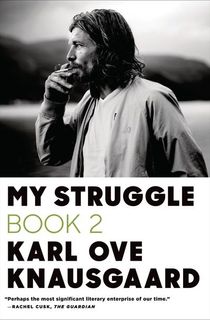In a well-written essay for The New Yorker, novelist Adelle Waldman discussed “the ideal marriage, according to novels,” and how that idea differs depending on the gender of the writer.
“For as long as novels have been written, heroines in books by women have studied their beloveds’ minds with a methodical, dispassionate eye. The ideal mate, for Jane Austen’s heroines, for Charlotte Brontë’s, for George Eliot’s, is someone intelligent enough to appreciate fully and respond deeply to their own intelligence, a partner for whom they feel not only desire but a sense of kinship, of intellectual and moral equality,” Waldman writes.
However, “straight male authors devote far less energy to considering the intelligence of their heroes’ female love interests; instead, they tend to emphasize visceral attraction and feelings.” Citing the work of Tolstoy, Bellow, Roth, and more recently Karl Ove Knausgaard, “Men have been, in a sense, the real romantics,” Waldman argues. “They are far more likely than women to portray love as something mysterious and irrational, impervious to explanation, tied more to physical qualities and broad personal appeal than to a belief—or hope—in having found an intellectual peer.”
Fascinated by Wildman's argument, we compiled “The Ideal Marriage Reading List” of books cited in Waldman’s piece—which are worth a read, or re-read, and have given us some food for thought.

The Neapolitan Novels
These four novels in a series by Italian author Elena Ferrante may be about female friendship, but they are also about the very different ways that Lenu and Lila approach their relationships with men. Lenu’s schoolgirl crush on Nino grows into something more intense when she realizes that he respects her for her ideas, and her talent as a writer.

Anna Karenina
Levin loves Kitty from the start of Tolstoy’s masterwork and, as Waldman points out, theirs is one of the strongest, perhaps most realistic portrayals of marriage before the modern era. But it is exactly that—the traditional idea of femininity and what is “good” and “wifely” that makes Kitty a desirable mate for Levin—that as time marches on, becomes more and more problematic.

Middlemarch
What happens when a woman is desired purely for looks, wealth, or both is a cautionary tale in George Eliot’s epic masterpiece.
Lydgate loves Rosamund because she is beautiful and appears to be low maintenance, but it is Rosamund’s artificiality, the very thing that draws Lydgate to her, that contributes to what is ultimately an unhappy union.

Sense and Sensibility
Marianne Dashwood, the younger Dashwood sister, is determined to have, to quote her favorite Shakespeare sonnet, “a marriage of true minds.” Not exactly a short-order in the time of Jane Austen. Marianne wants it all: good looks, good breeding, and great conversation. “Austen’s sensitive, intelligent heroines reflexively seek out as love interests those few men who are equally sensitive and equally intelligent, who are capable of meeting them ‘in conversation, both rational and playful,'” Waldman writes.

Jane Eyre
In the time of Austen and Brontë men had more intellectual stimulation through careers, friends, and travel than their female counterparts. “Women, on the other hand, were forced to lean more heavily on love and marriage, for intellectual recognition and companionship as for everything else,” Waldman asserts. It’s only when the playing field between Jane and Rochester has been leveled a bit that Jane realizes she has found her true mate, and the concept of the two as equals is truly provocative for its time.

My Struggle: Book 2
Karl Ove Knausgaard’s intense six-volume autobiographical novels are indulgent and raw. The second volume in particular deals with his domestic life: the dissolution of his first marriage, when he meets his partner Linda, and his emotions surrounding fatherhood. Like Levin’s for Kitty, Karl Ove’s love for Linda is otherworldly, leading Waldman to believe:
“Ideas about love, about its essential nature and its causes, are highly idiosyncratic and often unstable. And yet, among the endless variations, romantic ideation does seem to lean to one or the other of two poles: the notion of love as a profound, mysterious attraction, or the idea of it as a partnership with a like soul, a person uniquely capable of understanding one’s inner life.”
Featured Photo: Eric Alves / Unplash





